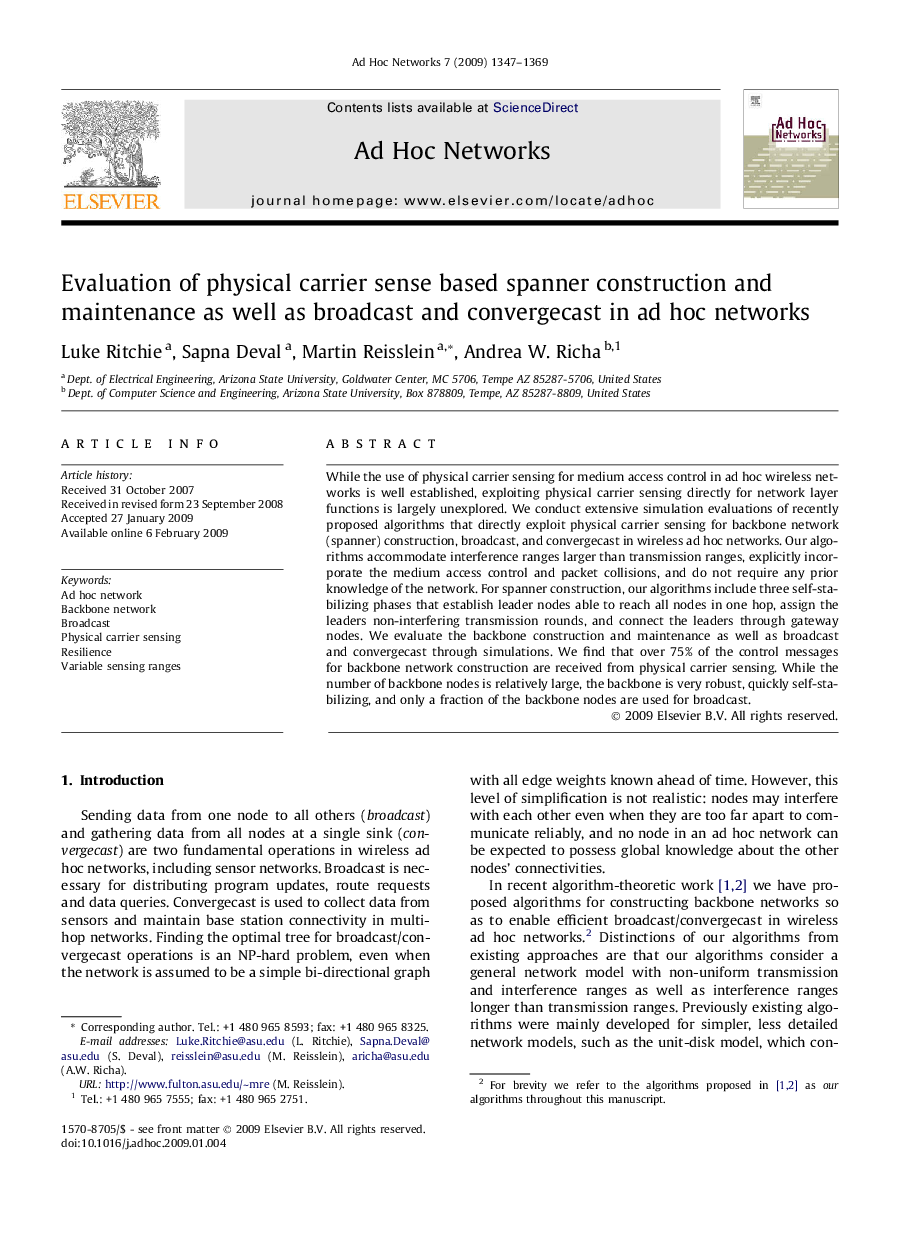| Article ID | Journal | Published Year | Pages | File Type |
|---|---|---|---|---|
| 444824 | Ad Hoc Networks | 2009 | 23 Pages |
While the use of physical carrier sensing for medium access control in ad hoc wireless networks is well established, exploiting physical carrier sensing directly for network layer functions is largely unexplored. We conduct extensive simulation evaluations of recently proposed algorithms that directly exploit physical carrier sensing for backbone network (spanner) construction, broadcast, and convergecast in wireless ad hoc networks. Our algorithms accommodate interference ranges larger than transmission ranges, explicitly incorporate the medium access control and packet collisions, and do not require any prior knowledge of the network. For spanner construction, our algorithms include three self-stabilizing phases that establish leader nodes able to reach all nodes in one hop, assign the leaders non-interfering transmission rounds, and connect the leaders through gateway nodes. We evaluate the backbone construction and maintenance as well as broadcast and convergecast through simulations. We find that over 75% of the control messages for backbone network construction are received from physical carrier sensing. While the number of backbone nodes is relatively large, the backbone is very robust, quickly self-stabilizing, and only a fraction of the backbone nodes are used for broadcast.
